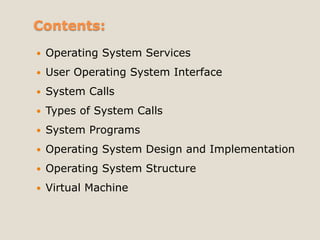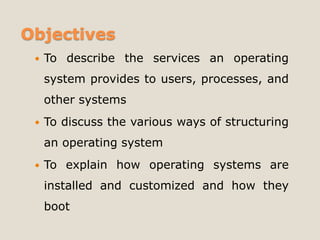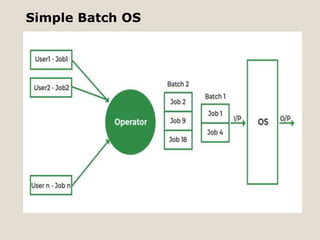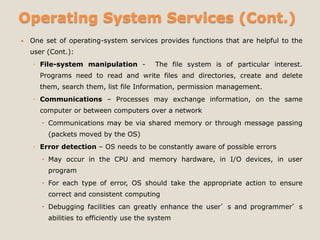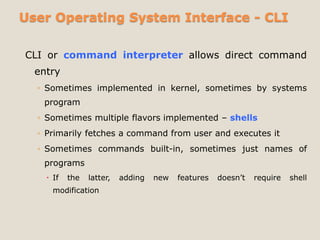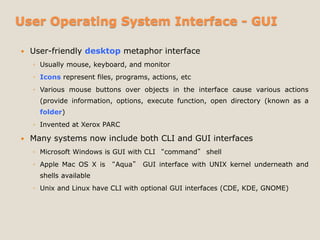This document discusses operating system services and structure. It describes how operating systems provide services to users like user interfaces, program execution, I/O operations and file manipulation. It also discusses how operating systems provide services to ensure efficient system operation through resource allocation, accounting, protection and security. It defines system calls as the programming interface to OS services and describes common types of system calls. It also describes system programs that provide user interfaces to system calls and convenient environments for tasks like file manipulation, programming language support and communications. Finally, it discusses operating system design and implementation.

